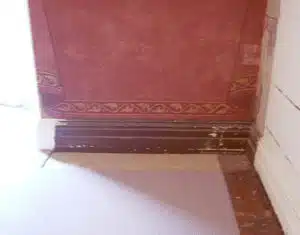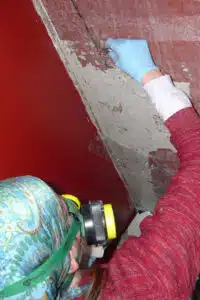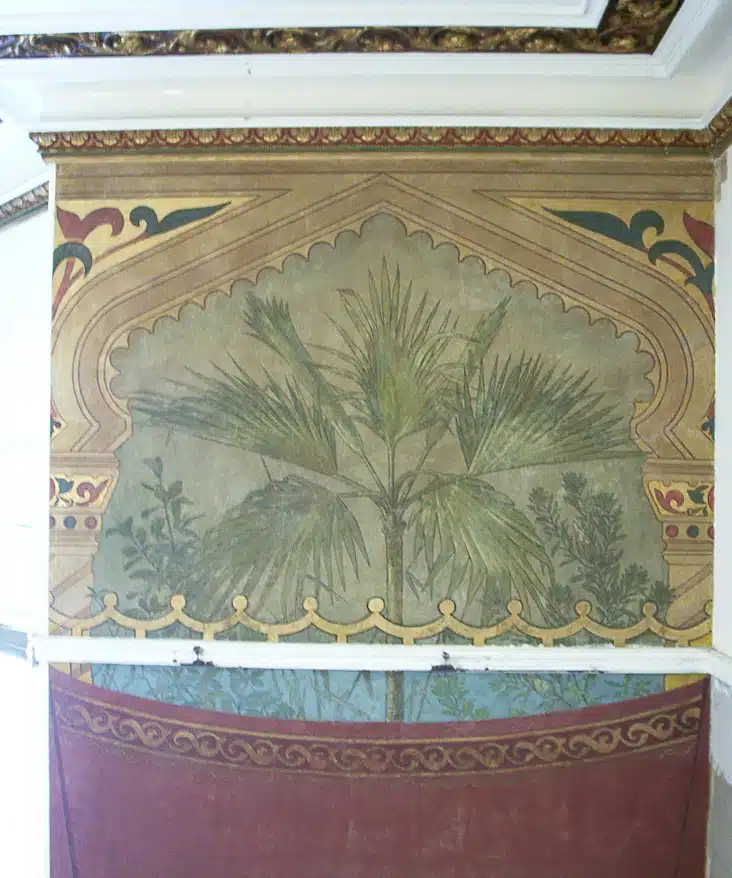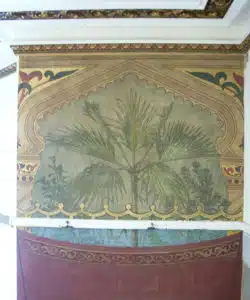Careful chemistry has peeled back two layers of house paint to unveil a rich world of Victorian murals at Mandeville Hall-Loreto Girls School in Toorak. Called the Indian Room, the walls were decorated in the 1870s with paintings of lush green foliage and vegetation, bordered with red draperies and golden architectural detail.
But for the past 50 years, the exotic artworks have lain under a shroud of thick white and grey paint. Stripping the overlying paint without eating into the murals beneath presented quite a challenge. That’s where art conservator and applied chemist Jocelyn Evans from Melbourne University’s Centre for Cultural Materials Conservation (CCMC) stepped in.
“Overpaint-where the original paint layer of an art-work or mural is covered by later paint like house-paint-is a common problem in conservation,” she says. “The difficulty lies in trying to remove the overpaint without damaging the original. Most chemical systems that attack the overpaint also harm the original paint.”
Evans had to develop her own paint removal system. It was based around a slow-acting paint stripper, called a dibasic ester. “In essence, dibasic esters have a strong softening effect on paint films. But unlike other chemicals commonly used in paint-strippers, they penetrate quite slowly, allowing us to remove the upper paint layer before they can reach the original layer underneath.”
While conservators have already used commercial paint strippers based on dibasic esters to remove non-original paint in a variety of contexts, the idea that they could be used to remove overpaint from an original paint layer, leaving it intact, had not been fully explored. In the meantime, commercial paint strippers based on dibasic esters were withdrawn from the Australian market, apparently due to poor sales.
In her investigation, Evans looked at how dibasic esters act on paint layers, and how conservators could use them to remove non-original paint. This involved devising (and testing) a range of formulations from materials that Australian conservators would have ready access to. The end result was the paint-removal system used successfully at Mandeville Hall.
“It’s impossible to describe the feeling when uncovering these astonishing murals, and being the first to see them in decades” says Evans. “Conservation is such an exciting blend of science and art. In this project I was able to apply chemical principles to a real-life problem, with such a visually beautiful result at the end of it all.”
Stripping in action: removing house-paint from a 19th century mural (Jocelyn Evans and Raaf Ishak from The Centre for Cultural Materials Conservation)








 Fresh Science is on hold for 2022. We will be back in 2023.
Fresh Science is on hold for 2022. We will be back in 2023.